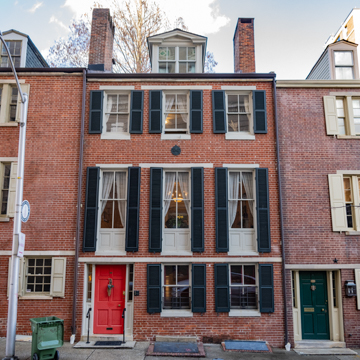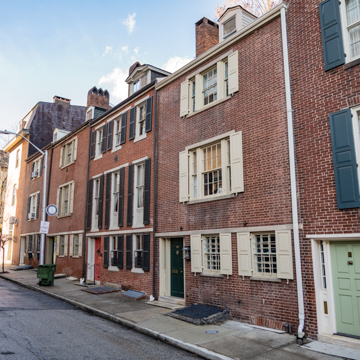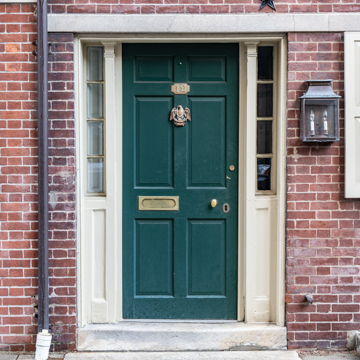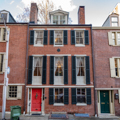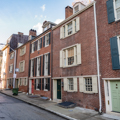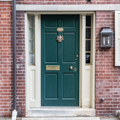Intended for a sophisticated clientele is this early example of multi-unit row houses, designed by this celebrated local architect. With staid neoclassical detailing and a piano nobile plan elevating the principal rooms over a low ground-floor entrance level, the row houses appear almost modern-day. Built of Flemish-bond brick with contrasting white marble details, they encompass five stories, including a basement kitchen and finished attic. Of note are the tripartite windows, entrances with sidelights separated by jambs capped with molding to resemble slender unassuming Doric columns, and, emblematic of Baltimore’s early row houses, a single dormer lighting the attic story. Long resided in one of the units himself.
You are here
HAMILTON STREET ROW HOUSES
If SAH Archipedia has been useful to you, please consider supporting it.
SAH Archipedia tells the story of the United States through its buildings, landscapes, and cities. This freely available resource empowers the public with authoritative knowledge that deepens their understanding and appreciation of the built environment. But the Society of Architectural Historians, which created SAH Archipedia with University of Virginia Press, needs your support to maintain the high-caliber research, writing, photography, cartography, editing, design, and programming that make SAH Archipedia a trusted online resource available to all who value the history of place, heritage tourism, and learning.


